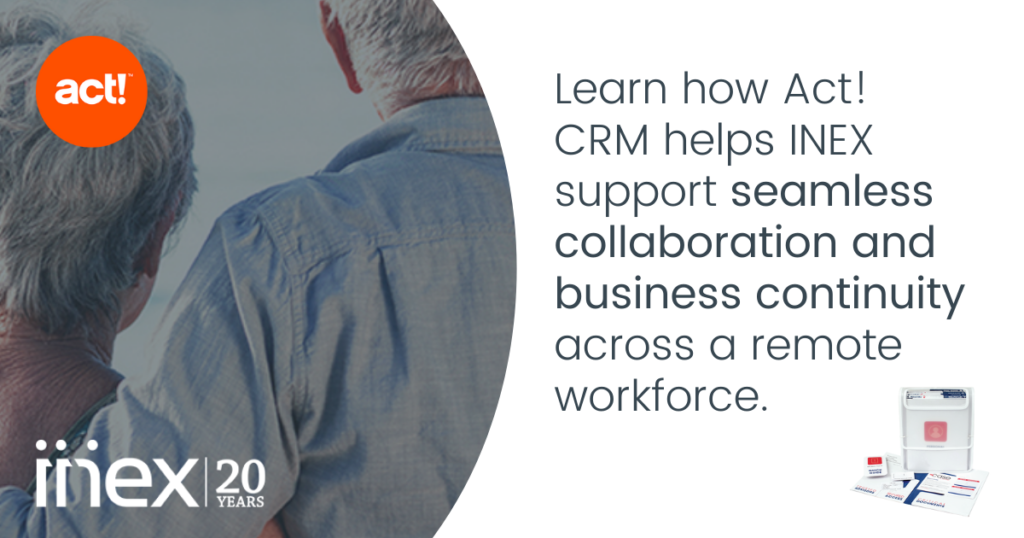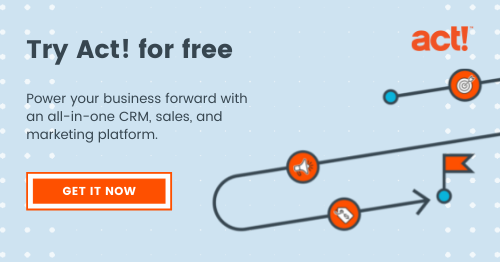
In the early stages of the pandemic, many small businesses had to shut their doors. But others found creative ways to keep serving customers and driving revenue without in-person contact. They learned how to thrive by using technologies and software, including CRM and marketing automation, in innovative ways to enable contactless sales and customer support — lessons we should all take into 2022 and beyond.
So, how can small businesses manage this constant change without losing customers or employees? Patience and flexibility are key, but so is having the right technology to keep your business moving forward.
The good news is, we’ve been here before, so we don’t have to reinvent the wheel.
CRM: The hero we didn’t know we needed
Customer relationship management (CRM) systems have been a big part of that success. Before the pandemic, many small business owners either didn’t have a CRM platform or they didn’t know how to use the functionality to its full potential. When COVID-19 hit, many spun up quickly on CRM in order to support fully remote and hybrid workspaces. It turns out that this effort to maximize CRM investments has been the difference between surviving and thriving during the pandemic.
Let’s take a closer look at how CRM can help your company adapt and thrive as these uncertain times continue.
Fast forward to the end of 2021. What has CRM taught us?
Throughout the pandemic, many small and mid-sized businesses (SMBs) discovered how to use CRM software to create a silver lining in the midst of a crisis. They unified workflows and automated many business processes in ways they hadn’t before. So, even though the pandemic will likely continue well into 2022, small businesses don’t have to scramble to figure things out as they did in early 2020. Here are some important ways CRM can help you meet your business goals through the rest of 2021 and beyond.
Start simple: Integrate calendar, email, and office software through CRM.
Too many companies still use a separate system for CRM, one for email, and still another for their calendar. They might also use Microsoft Office 365 and/or Google Workspace for additional tasks. Since unconnected apps and platforms can’t talk to each other, employees spend way too much time trying to keep track of daily communications and data across all of these platforms.
If your business is still operating this way, it’s time to look for a CRM system that can stitch all of these separate products together for you. That way you can keep your whole team on the same page by making sure your customer data is accessible from one place with a complete 360-degree view. This simple step makes running your company so much easier.
Here’s one way integrated CRM, calendar, email, and office software can streamline everyday operations:
Imagine if a salesperson is out sick or on PTO, and a prospect they’ve been nurturing calls and wants to sign a service contract. In some companies, that prospect’s history and conversations may exist only on the salesperson’s desktop, email account, or even on notepads in a drawer. In other words, that valuable data is inaccessible to the rest of the team. On the flip side, when your CRM is integrated with email and other productivity suites, every client’s information is stored in one easily accessible place, so any team member can seamlessly continue the client engagement without any prior knowledge of the account.
Grow your business: Connect your CRM to your website.
CRM automation is every business owner’s best friend. Unfortunately, not enough SMBs know how automation can help them capture new leads directly from their website.
Integrating your CRM with your website contact forms is one of the easiest and most impactful ways to import data from prospective customers. (Most CRM software should be able to handle this automatically for you.)
Here’s how it works: Any time a new website visitor enters their contact information in a web form, that data is automatically imported into your CRM. No manual data entry is required. You can pre-customize your CRM to make sure the lead is routed to the right salesperson, who is then sent reminders and alerts to follow up through email or a phone call.
This simple web integration also ensures that new leads don’t fall through the cracks. When a prospect signs up for your newsletter or asks a question on your social media page, that information can be funneled directly into your CRM so anyone on your sales team can follow up in real-time.
In many cases, that quick reaction time can be the spark that leads to a lifelong customer relationship.
Responsiveness not only improves the customer experience, but it can also set your company apart from the competition. In a pandemic era, where so many interactions are faceless and contactless, your customer service team can and should play a vital role in personalizing customer relationships, improving customer retention, and building momentum for more sales. Your job is to give them the right tools to build and nurture those relationships.
Do more in less time: Use CRM marketing automation to connect with customers.

Do you have a new product or service to announce? Have you launched a mobile app to facilitate contactless transactions? Have you recently changed any of your coronavirus protocols?
Whatever you need to communicate, marketing automation can help you do it faster and more effectively.
CRM marketing automation makes it so much easier to execute marketing campaigns from start to finish. You can choose from easy-to-customize email templates to personalize your messages to select groups of prospects and customers.
But marketing automation can do much more than send emails — it can gather all kinds of data points and distill them into valuable insights to help you improve communication, sales forecasting, and profitability. Better yet, some of today’s CRM platforms are starting to put Big Data analytics in the hands of smaller businesses so they can:
- Create a more strategic social media presence across Facebook, Instagram, Twitter, Pinterest, LinkedIn, and other platforms.
- Use search engine optimization (SEO) keywords and tactics to drive more online traffic to your website.
- Leverage data from sales and inventory, customer service logs, surveys, and more to improve product and service offerings.
- Employ predictive analytics to better understand past and future customer behavior — and use those insights to shape your sales and marketing strategies.
Build success from within: CRM helps your team members work better together (wherever they work).
How many of us have scrambled to find a document, presentation, call notes, or some other critical file moments before an important client meeting? Although unorganized data and miscommunication have plagued companies long before the pandemic, the rapid expansion of remote workforces has only made it more difficult to manage growing volumes of data.
Consider that only half (54%) of remote workers believe they have the right collaboration systems in place to get their work done. The rest either lack proper training to use workplace collaboration tools, or the processes are clunky and confusing.
Some CRM providers are aware of this alarming trend, and now make it easier to access business productivity apps right from their CRM interface. By integrating with popular e-commerce, accounting, videoconferencing, document management, and other third-party applications, workers can access all of these tools from one place.
For example, instead of opening a separate app, a salesperson can pull up a PDF of a contract, modify pricing or other terms, and send it to a client for signature — all from within the CRM. Best of all, a link to the document can be added to the customer’s CRM account for easy access in the future. What’s more, the CRM can be configured to remind a salesperson to follow up with a customer after a recent purchase or to check up on a service issue.
Not only does this streamline collaboration, but it also helps reduce tedious tasks, worker frustration, and burnout. And in these trying times, anything that makes our work lives easier is a welcome change.
Act! CRM helps you weather constant business change
As we head into another COVID-19 winter, staying flexible is the key to staying positive (and also staying in business). If your company is struggling to manage sales data, unify productivity apps, centralize customer contact information, and support remote collaboration, now’s the time to look at a CRM platform like Act!.
Act! CRM captures all your sales and marketing data in one place, including customer contact information, purchase history, email communications, social media campaigns, and more. You can then turn this data into marketing intelligence that helps expand and energize your customer relationships — all while empowering your team with unified collaboration tools so they can stay productive wherever they work.










